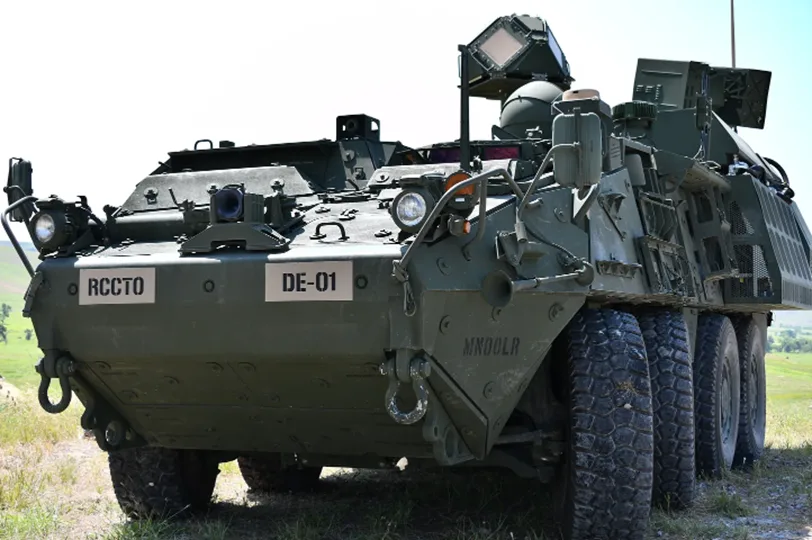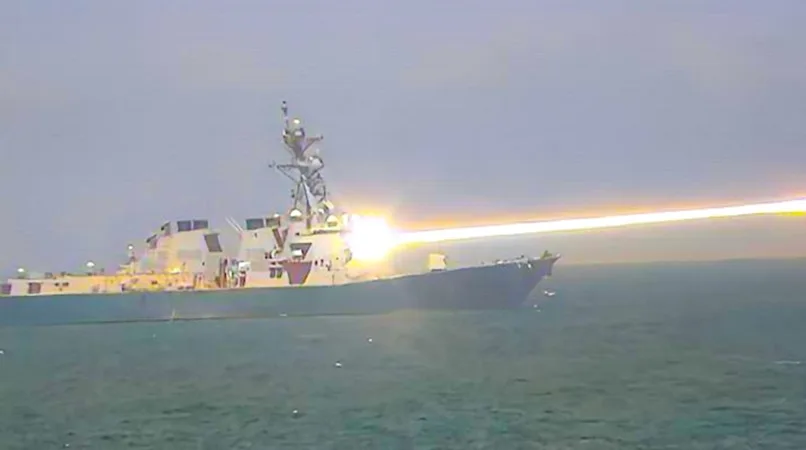This Week in Laser News – What’s Going on With HELs
(News from 15 to 28 February 2025)
The past two weeks, we had more articles discussing the Navy’s much publicized HELIOS testing. There is also some interesting work summarizing where U.S. laser systems are at. Some additional articles on the Golden Dome and Lasers in counter UAS also popped up.
News roundup by Caleb Hoover
Wednesday February 19th 2025
Article Info
On Substack, Jared Keller posted “Are Laser Weapons on DOGE’s Pentagon Chopping Block?”
Article Summary
Laser weapon systems are at a crossroads. While they’ve hit major milestones—especially in counter-drone (cUAS) operations—critics still question whether they’ve truly moved beyond the research phase into operational viability.
The article highlights a concerning trend: Directed Energy (DE) funding is steadily dropping:
📉 $1.3 billion in 2023
📉 $962 million in 2024
📉 $789.7 million in 2025
For comparison, the Standard Missile-2 (SM-2)—a staple of U.S. Navy air defense—costs $2.4 million per missile. Even at the 2023 DE budget high, the Pentagon could only afford 541 SM-2s. In contrast, lasers offer an ultra-low cost per shot, making them a promising alternative for many similar target sets.
The “Captain’s Dilemma”
Despite the cost savings, laser weapons face a tactical hurdle—their shorter engagement range. Commanders naturally prefer to neutralize threats from as far away as possible, making traditional kinetic weapons the safer choice. This hesitation limits real-world adoption.
What’s Next for DE?
Speculation that Department of Government Efficiency (DOGE) is now likely weighing three possible paths:
1️⃣ Cuts—Lasers are deemed “not mature enough” for larger funding.
2️⃣ Status Quo—DE funding remains under the radar without major shifts.
3️⃣ Surprise Boost—DOGE determines that long-term cost savings justify a funding increase.
As the Pentagon crunches the numbers, the big question remains: Will lasers get the investment needed to prove their worth, or will funding continue to decline?
Article image: The US Army’s Directed Energy Maneuver-Short Range Air Defense (DE M-SHORAD) system. (US Army photo)

Saturday February 22nd 2025
Article Info
The National’s Robert Tollast published an article titled “Zap, jam or shoot? Inside the war on drones at IDEX 2025”
Article Summary
The ongoing conflict in Ukraine has made one thing clear: drones are dominating the battlefield. Some estimates suggest that drones account for the majority of Russian and Ukrainian casualties, with even tanks proving vulnerable to coordinated drone swarms.
At IDEX 2025 , counter Unmanned Aerial Systems (cUAS) took center stage, showcasing emerging solutions to this growing threat. Among them:
✅ Lasers—Directed energy weapons that zap drones mid-air.
✅ Lower-cost rockets—Filling the sky with shrapnel to take out swarms.
✅ Smart Shooter—An advanced aiming system that helps soldiers hit fast-moving drones.
The British Army has coined a new term for this low-altitude battleground: “near-surface warfare.” While makeshift countermeasures like shotguns can work in a pinch, First-Person View (FPV) drones traveling at 40 meters per second make for incredibly difficult targets.
Other defenses include jamming drone control signals or video feeds, but advanced drones are adapting—using fiber-optic cables for control or onboard computer vision for final target engagement. In these cases, “hard kill” solutions like lasers and kinetic interceptors remain the only effective options.
A multi-layered defense appears to be the preferred strategy, combining electronic warfare, directed energy, and traditional kinetic methods. With drone warfare evolving rapidly, countermeasures will need to keep pace.
Image caption: Drones on display on the Ukraine stand at Idex 2025 in Abu Dhabi. Antonie Robertson / The National (from the article)

Monday February 24th 2025
Article Info
On Substack, Jared Keller posted “Here’s the Status of Every Known US Military Laser Weapon”
Article Summary
Laser weapon systems are making significant strides in defense technology. As of February 2025, at least 20 laser weapons are either in testing or already deployed for defense purposes, marking a pivotal moment for the future of warfare. These systems vary in capability and status, with the following highlights:
•Palletized High Energy Laser (P-HEL) – 2 systems
•Directed Energy Maneuver-Short Range Air Defense (DE-MSHORAD) – 4 systems
•Optical Dazzling Interdictor, Navy (ODIN) – 8 systems
•High-Energy Laser with Integrated Optical-Dazzler and Surveillance (HELIOS) – 1 system
•High Energy Laser Expeditionary (HELEX) – 1 system
•High-Energy Laser Weapon System (HELWS) – 3 systems with “H4” system – 1 system
While these systems show promise, there’s a noticeable difference in their outlooks. The P-HEL, ODIN, and HELIOS are deemed to have a “Good” outlook, while other systems remain in a “Hazy” status.
The article also touches on several cancelled programs, like the Compact Laser Weapon System (CLaWS), Airborne High Energy Laser (AHEL), and Self-Protect High-Energy Laser Demonstrator (SHiELD), providing a fuller picture of the military’s laser weapon evolution.
But the big question remains: How will U.S. defense leaders navigate this diverse portfolio of laser systems? Will they invest in the systems with a “Good” outlook, and how might they incorporate them into a layered defense strategy? As lasers evolve, mass deployment across multiple platforms will likely be key to their effectiveness on the battlefield.
Image caption: A US Army Palletized High Energy Laser (P-HEL) based on defense contractor BlueHalo’s LOCUST Laser Weapon System undergoing testing at the Yuma Proving Ground in Arizona in April 2022. (US Army photo/Brandon Mejia)

Wednesday February 26th 2025
Article Info
DesignNews has an article by Dan Carney titled “USS Preble Downs Aerial Target in HELIOS Laser Test”.
Article Summary
Covering the High-Energy Laser with Integrated Optical Dazzler and Surveillance (HELIOS) laser weapon system is quite popular with multiple articles surfacing with coverage on the successful testing of the USS Preble (DDG 88)’s HELIOS system downing a aerial target drones.
Each of these HELIOS articles seems to have some sort of nugget that helps paint the picture of the broader importance of this HELIOS testing. This article includes a quote from former Secretary of the Navy, Carlos Del Toro:
“While I was in San Diego last month, I visited USS Preble (DDG 88), fitted with the HELIOS laser weapon system,” he said. “Directed energy weapons, including high-energy lasers, are the future of warfare—offering a lower cost-per-shot against air and missile defense engagements. While our hard kill successes are making the news every day, we are also strengthening our ‘non-kinetic’ shield.”
There is also another quote from Professor Brij Agrawal, of Naval Postgraduate School:
“Defending against one drone isn’t a problem, But if there are multiple drones, then sending million-dollar interceptor missiles becomes a very expensive tradeoff because the drones are very cheap,”
Image caption: The USS Preble shoots down a drone using its HELIOS laser weapon system during testing during fiscal 2024. Director of Operational Test and Evaluation processed by Imagecolorizer.com

Special Bulletin!
In case you missed it SemQuest made some history last week during some testing at Dahlgren Virginia. Read all about it here!
That’s all for this week. Keep reading or check back for updates.
Check out this SemQuest video:
